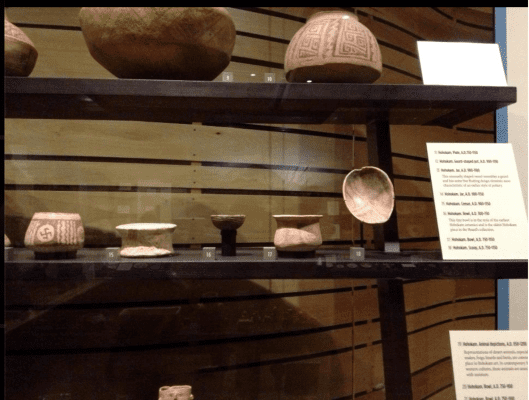 | ||
The Samara culture was a neolithic culture of the 5th millennium BCE at the Samara bend region of the middle Volga. It belongs to the Pontic-Caspian steppe cultures, among which the Proto-Indo-European Yamna culture developed.
Contents
Archaeological site
The Samara culture was a neolithic culture of the early 5th millennium BCE at the Samara bend region of the middle Volga, at the northern edge of the steppe zone. It was discovered during archaeological excavations in 1973 near the village of Syezzheye (Съезжее) in Russia. Related sites are Varfolomievka on the Volga (5500 BCE), which was part of the North Caspian culture, and Mykol'ske, on the Dnieper. The younger stage of the Samara culture is contemporaneous with the early Khvalynsk culture (4700-3800 BCE), while the archaeological findings seem related to those of the Dniepr-Donets II Culture (5200/5000-4400/4200 BCE).
The valley of the Samara river contains sites from subsequent cultures as well, which are descriptively termed "Samara cultures" or "Samara valley cultures". Some of these sites are currently under excavation. "The Samara culture" as a proper name, however, is reserved for the early eneolithic of the region.
Pottery
Pottery consists mainly of egg-shaped beakers with pronounced rims. They were not able to stand on a flat surface, suggesting that some method of supporting or carrying must have been in use, perhaps basketry or slings, for which the rims would have been a useful point of support. The carrier slung the pots over the shoulder or onto an animal. Decoration consists of circumferential motifs: lines, bands, zig-zags or wavy lines, incised, stabbed or impressed with a comb. These patterns are best understood when seen from the top. They appear then to be a solar motif, with the mouth of the pot as the sun. Later developments of this theme show that in fact the sun is being represented.
Sacrificial objects
The culture is characterized by the remains of animal sacrifice, which occur over most of the sites. There is no indisputable evidence of riding, but there were horse burials, the earliest in the Old World. Typically the head and hooves of cattle, sheep, and horses are placed in shallow bowls over the human grave, smothered with ochre. Some have seen the beginning of the horse sacrifice in these remains, but this interpretation has not been more definitely substantiated. We know that the Indo-Europeans sacrificed both animals and people, but so did many other cultures.
Graves
Graves are shallow pits for single individuals, but two or three individuals might be placed there. Some of the graves are covered with a stone cairn or a low earthen mound, the very first predecessor of the kurgan. The later, fully developed kurgan was a hill on which the deceased chief might ascend to the sky god, but whether these early mounds had that significance is doubtful.
Grave offerings included ornaments depicting horses. The graves also had an overburden of horse remains; it cannot yet be determined decisively if these horses were ridden or not, but they were certainly used as a meat-animal. Most controversial are bone plaques of horses or double oxen heads, which were pierced.
The graves yield well-made daggers of flint and bone, placed at the arm or head of the deceased, one in the grave of a small boy. Weapons in the graves of children are common later. Other weapons are bone spearheads and flint arrowheads.
Other carved bone figurines and pendants were found in the graves.
